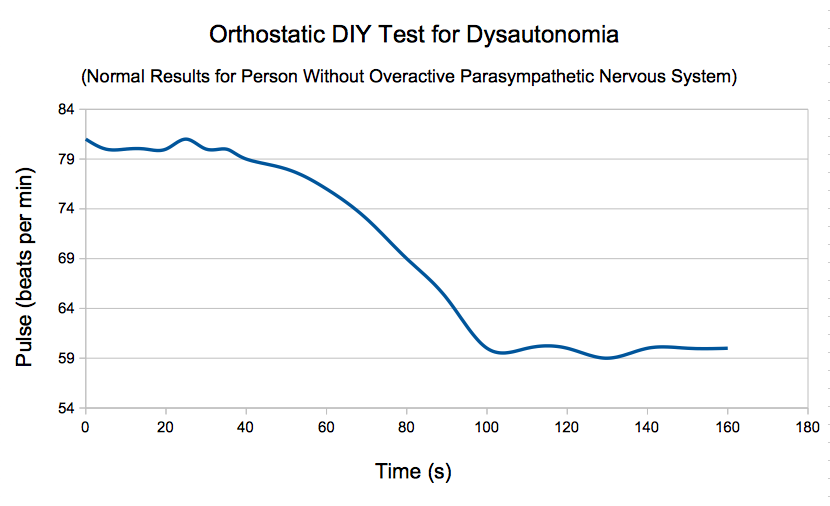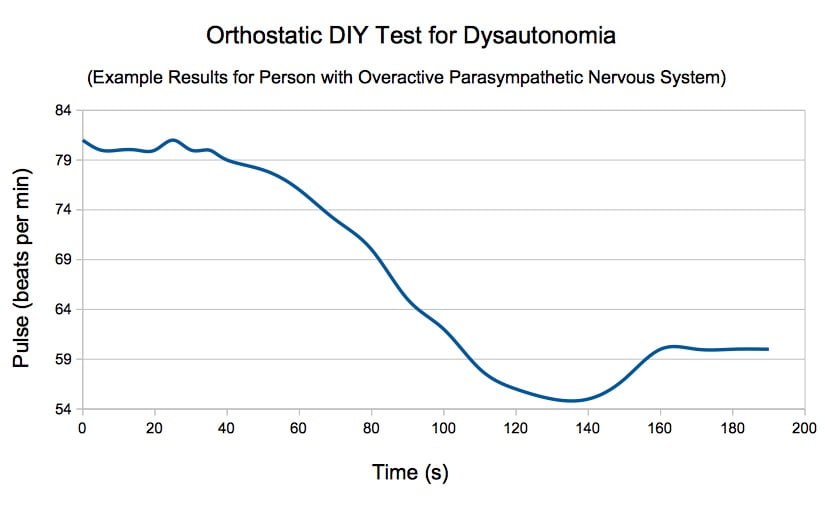- Updated on April 16, 2020
![]() By Dr. Artour Rakhimov, Alternative Health Educator and Author
By Dr. Artour Rakhimov, Alternative Health Educator and Author
- Medically Reviewed by Dr. David Walker, CPA, Licensed Psychologist and Naziliya Rakhimova, MD
Causes of an Overactive Parasympathetic Nervous System
This video explains parasympathetic overtraining and how to test it with a simple DIY test.
The parasympathetic nervous system is the second main division of the autonomous nervous system. It generally functions as a complement to the sympathetic nervous system to relax and quiet bodily functions. Endurance athletes who engage in long and repetitive physical activity are especially prone to developing this parasympathetic overtraining.
Note: The following article discusses the decrease of heart rate to abnormally low levels as a person transitions from standing to lying down. A low heart rate itself is not problematic – indeed, it is commonly observed in athletes training at a very high level or yoga masters whose hearts work more efficiently than the average individual’s. The parasympathetic overdrive discussed here relates to an imbalance between the functioning of the divisions of the autonomous nervous system, which manifests in erratic behavior of the pulse as the sympathetic nervous system attempts to compensate for the parasympathetic system’s hyperactivity or overdrive.
Dysautonomia DIY Orthostatic Test for Overactive Parasympathetic Nervous System
The dysautonomia orthostatic DIY test for an overactive parasympathetic nervous system is the inverse of the test for an overactive sympathetic nervous system. Instead of measuring the change in heart rate that occurs when transitioning from lying down to standing, the change is observed as the person moves from the orthostatic (upright, standing) position to the horizontal.
STEP 1. Begin by standing still. Allow for heart rate to stabilize, approximately 3-5 minutes.
STEP 2. Lie down swiftly and smoothly, with minimal fidgeting.
STEP 3. Remain still. Allow for at least 3 minutes to pass until heart rate stabilizes once more.
Examples to identify the condition
In a healthy individual without an overactive parasympathetic nervous system, the curve of heart rate against time would resemble the following:

In this example, the heart rate of the individual while standing still, at rest, before lying down is maintained at 80 beats per minute with little variation. At 40 seconds, the individual makes the transition from standing to lying down. As metabolic processes slow, the heart rate decreases approximately linearly from 80 to 60 beats per minute where it remains so long as the individual continues to lie down with minimal movement.
In an individual with an overactive parasympathetic nervous system, the curve of heart rate against time may resemble the following:

Instead of decreasing linearly from 80 to 60 beats per minute the heart rate decreases too far below the normal equilibrium — in this case, it undershoots by 5 beats to 55 beats per minute — before rising once more to the 60 beats per minute required by the body as it lies still, at rest. This results in the characteristic inverted hill, or depression, on the graph. This undershoot occurs because the parasympathetic nervous system is generally responsible for relaxing and quieting bodily functions; an overactive parasympathetic nervous system decreases the heart rate beyond the bodily requirement before the sympathetic nervous system kicks in to counter the effect.
Possible Treatment for Overactive Parasympathetic Nervous System
The condition can be resolved relatively easily by engaging in more dynamic activities like games, and/or by taking rest from monotonous physical activity for as little as 3-4 days. Breathing retraining also offers a solid long-term solution for this condition and many others. To get started with breathing retraining, visit the Learn here page.

